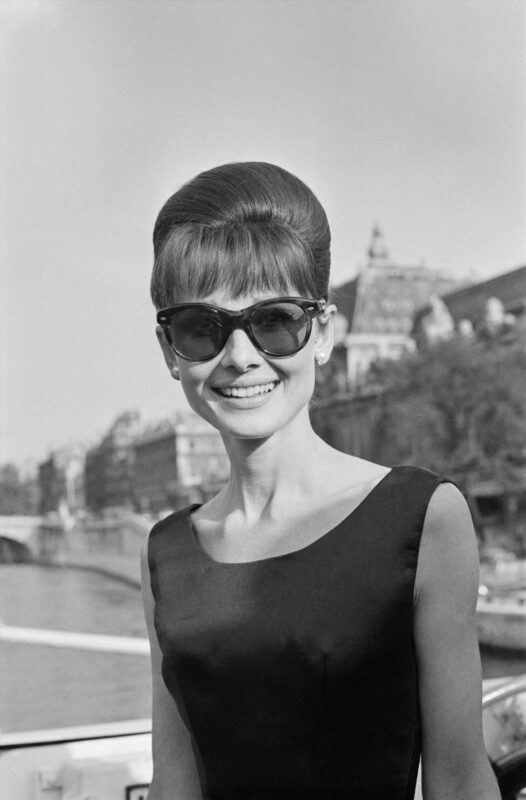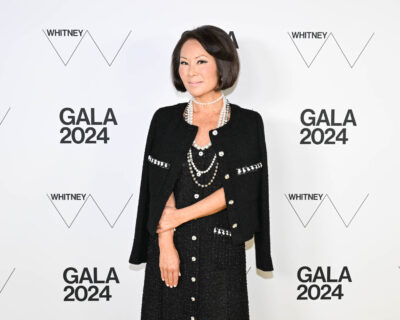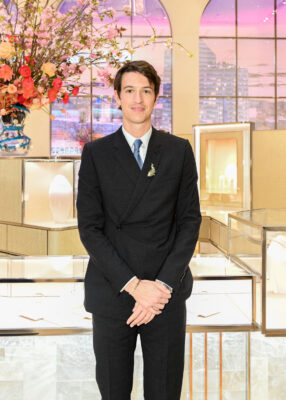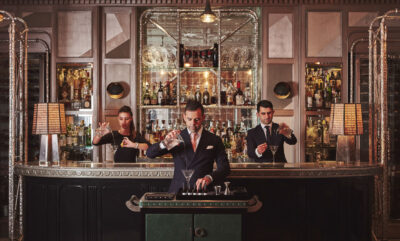
DP Books
Audrey Hepburn in Paris
A lush new book takes you inside the Audrey Hepburn/Paris love story that gave rise to some of film’s most memorable fashion moments.
1951 was a pivotal year for Audrey Hepburn. The 22-year-old actress had signed with the Associated British Pictures Corporation (ABPC) and was gradually earning small roles in British films. Behind her were the exhausting days of rushing around London performing as a chorus girl in nightly musical revues. She was now gaining a reputation as a young starlet with considerable promise.There were many exciting ventures on the horizon, but one in particular would launch Audrey’s career and introduce her to Paris for the first time.
In April of 1951, Audrey accepted a role in Jean Boyer’s upcoming movie, Nous irons à Monte Carlo (We Will Go to Monte Carlo), which was scheduled to film in Monte Carlo that summer. Despite her hesitations, she desperately needed the money and production offered to pay for her mother, Baroness Ella van Heemstra, to accompany Audrey to Monaco.
Better yet, the studio promised that her character would wear a Dior gown. As an impassioned admirer of French fashions, Audrey was delighted at the prospect of wearing a true couture design.
In May, before shooting began, Audrey made four subsequent trips to Paris in preparation for the film. Even though she had been raised in Europe, this was her first time visiting the fashionable city. She was born in Belgium on May 4, 1929, and was the only child of Joseph Hepburn-Ruston, a British banker, and Ella van Heemstra, a Dutch baroness.

She spent her infancy in Brussels with her father, mother, and two stepbrothers from her mother’s first marriage. “I lived and was based in Belgium until I moved to Holland, so my first words were French,” she explained years later.
On Saturday, May 26, 1951, Audrey traveled to Paris, unaware of the significance the city would have on her future. The following month, prepped and ready to go, Audrey traveled to Monaco to begin production on We Will Go to Monte Carlo.
While filming in Monte Carlo, Audrey resided at the Hôtel de Paris Monte-Carlo in the heart of Monaco. Established in 1864, the Hôtel de Paris Monte-Carlo was a major attraction for international society. Two of the hotel’s most notable residents were the French novelist Sidonie-Gabrielle Colette (known by the mononym Colette) and her husband, Maurice Goudeket.
Colette, who was wheelchair-bound due to severe arthritis, had spent five consecutive winters at the exclusive hotel. Prior to her vacation, Colette had hired playwright Anita Loos and theatrical producer Gilbert Miller to dramatize her novel Gigi for the Broadway stage.
Everything was in place but one vital part: the actress who would play the starring role of Gigi. Colette knew she needed someone with that certain je ne sais quoi to portray a 16-year-old French girl growing up in 19th-century Paris.
As legend has it, one afternoon Audrey was shooting a scene in the lobby of the Hôtel de Paris when she caught the eye of Colette, who was passing through on her way to lunch. Amid the frenzy of actors, crew members, and camera equipment, Colette turned to her husband and exclaimed, “Voilà notre Gigi pour l’Amérique!” (“There is my American Gigi!”).
At the behest of his wife, Maurice made arrangements to meet Audrey and organize an introduction between Colette and the fledgling young actress. Audrey, admittedly clueless about the author’s stature in the literary world, conveyed her doubts. She was terribly flattered by their offer but expressed her regrets, “I’m sorry, madame, but I wouldn’t be able to, because I can’t act. I’m not equipped to play a leading role since I’ve never said more than one or two lines on stage in my life. I’ve done bits in films, of course, but I don’t consider that acting.”

Defiant in her decision, Colette wouldn’t accept anything less than yes. With some convincing, Audrey accepted the part of Gigi and in July of 1951 traveled to Paris to meet with Colette at her apartment at the Palais-Royal on 9 rue de Beaujolais.
Colette sensitively wrote about Audrey’s arrival, “She is dark and charming, as slender as the swamp reeds of my native province, with an ease and grace of movement such as a doe might envy . . .”
Audrey entered the author’s dwelling dressed in all black like the beatnik poets who gathered along the Seine. She wore a black long-sleeved sweater with matching slacks, a leather belt that subtly accentuated her delicate waist, and matching black gloves. The combination of her boyish appearance and charming disposition made her the perfect embodiment of Colette’s precocious heroine.
It would be another two years before Audrey returned to Colette’s apartment at the Palais-Royal.
In February of 1955, during a three-day trip to Paris, Audrey paid her respects to Maurice Goudeket after the passing of his wife the year before. It was rumored that Colette had left Audrey some valuable jewelry in her will.
That August, Audrey traveled to Paris again to attend a mass at a small chapel on the outskirts of Paris, marking the one-year anniversary of Colette’s death. Also in attendance were the French actor Maurice Chevalier and the French writer and artist Jean Cocteau. Colette had single-handedly changed the trajectory of Audrey’s life; in less than a year, she had gone from being an unknown chorus girl to a brilliant star on the rise.
Among her possessions, Audrey faithfully kept a portrait of Colette inscribed “Pour Audrey Hepburn, trésor que j’ai trouvé sur une plage.” Translated: “To Audrey Hepburn, a treasure that I found on a beach.”
Audrey’s sojourn to the Palais-Royal ignited an enduring love affair with Paris. After completing her first stint on Broadway in Gigi, Audrey would earn her career-defining role as Princess Ann in Paramount Pictures’ Roman Holiday. The following year, she would sign on to star as the titular role in Billy Wilder’s romantic comedy, Sabrina.
That summer in 1953, Audrey would once again pack her suitcase and travel to the French capital for another life-altering appointment: this time at 8 rue Alfred de Vigny to meet with a young courtier named Hubert de Givenchy.

Hero photo by Pierluigi Praturlon/Reporters Associati; Archivi/Mondadori Portfolio via Getty Images



